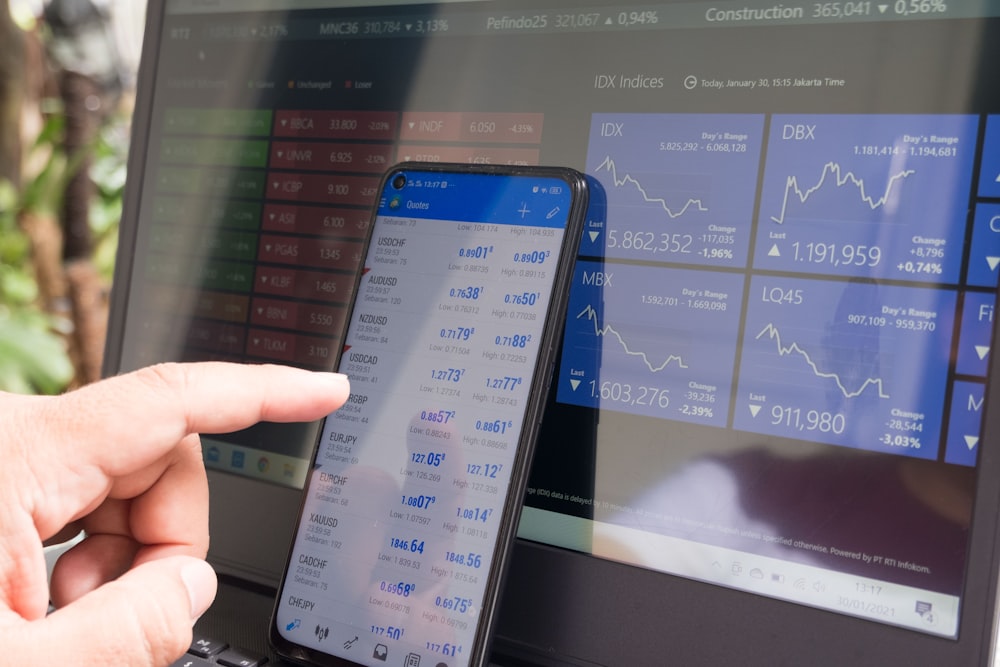The Short-Term Uptrend Continues, But It Hasn't Been Much Of One
Image Source: Unsplash
The short-term uptrend continues. Looking at the chart of the PMO index below, you would think that this current cycle that started June 24 has been an ordinary push upward for stock prices, but it has actually been a confusing zigzag that has pushed prices sideways.
So, it hasn't been much of an uptrend, and there were a couple of very large moves, one downwards and the other upwards. Cash has been the best trade since June 24, but what to do now?
This chart has the price of the index mapped against the PMO, and it shows how stock prices rise and fall in correlation with the PMO.
It isn't always a perfect correlation, and the PMO will give the occasional false or late signal which makes trading a challenge, so there are some periods that are more difficult to trade. The trick is to be open and ready for the rough patches because they are inevitable. It's part of doing business, and I am alright with it as long as I am disciplined and stick to my own trading process.
Keeping to the process is the real challenge because the market tests yours emotions. It has been possible to trade these short-term cycles for most of the year if you had been willing to short at the cycle peaks when the market is feeling good, and then cover shorts at the lows when the market is feeling bad. It doesn't sound that hard, but it is.
This chart helps to show the sideways movement of the indexes for the last three weeks. There was a very short-term higher low, but not a higher high yet.
The bullish percents aren't offering much. The movement is trending slightly upwards, but not convincingly. The levels remain oversold.
This chart shows that the short-term trend is getting closer to the overbought level, but it is a no man's land at the moment. From the position of the momentum indicator, it looks like we need to give the market a little more time before seeing the next downward cycle.
The number of new 52-week lows have dropped significantly over the last few days. This is the level where new lows have to be in order to trust that the indexes will move higher. This is bullish, but you have to look at this chart after the close every single day because it can change quickly. A good example is the late-May, early-June period where the levels were bullish until they started to spike and quickly became very bearish.
Junk bond prices started getting volatile a couple months ago. In late May prices spiked higher, and then rolled over until they then spiked lower. Now, they have settled down, and this chart is looking harmless at the moment. But similar to the chart of new lows shown above, if junk bond prices start moving lower, it will be time to get cautious towards stock prices.
I have been shorting Europe using an inverse ETF, so this chart helps with the timing. At the moment, I think this is saying that the ETF remains weak because it can't rally, but that short-term momentum is to the upside for now. I will probably add to the Europe short position on this rally. Keep in mind that this ETF is priced in US dollars.
Global stock prices become highly correlated during bear markets, so it isn't a bad idea to watch how European stock markets are behaving.
The NDX has been showing some improvement with a tiny break of this downtrend. No doubt it has been helped by the weak oil prices, the excessive selling of the index, and the inclination of investors to want to buy technology. The strength isn't much though, and these indexes continue to be trapped in strong downtrends.
A number of people have been saying for a couple months that inflation has peaked, and this chart would certainly support their claim. I've been shorting the gold miners, but now they seem a bit too oversold to be short. I'll remain bearish the miners until the downtrends are broken despite the gold bulls.
The 10-Day Call-Put ratio syncs up nicely with the short-term market cycles, and it gave us some good trading signals recently. At the moment, it is telling us not to aggressively enter new longs, but it isn't quite yet the time to be selling.
Treasury yields dipped under their 50-day averages last Friday, and the stock market rallied. Now, yields are rising again and I expect that stock markets won't be too happy about it. If these yields exceed the late June short-term highs, then I would get ready for the next downward cycle for stock prices.
Bottom line: At the moment I am 29% long individual stocks mostly health care, and 36% short via inverse ETFs which are short Europe, Emerging markets, Semiconductors. The percentage short seems too high considering that there wasn't a sell signal in any of these charts shown.
Outlook Summary
- The short-term trend is up for stock prices as of June 24.
- The economy is at risk of recession as of March 2022.
- The medium-term trend is uncertain for treasury bond prices as of July 2.
More By This Author:
The Short-Term Uptrend Appears To Continue Despite Rough Tuesday
Friday's Short-Term Uptrend Could Launch A Summer Rally
Last Week's Short-Term Downtrend Continues
Disclaimer: I am not a registered investment adviser. My comments reflect my view of the market, and what I am doing with my accounts. The analysis is not a recommendation to buy, sell, ...
more















